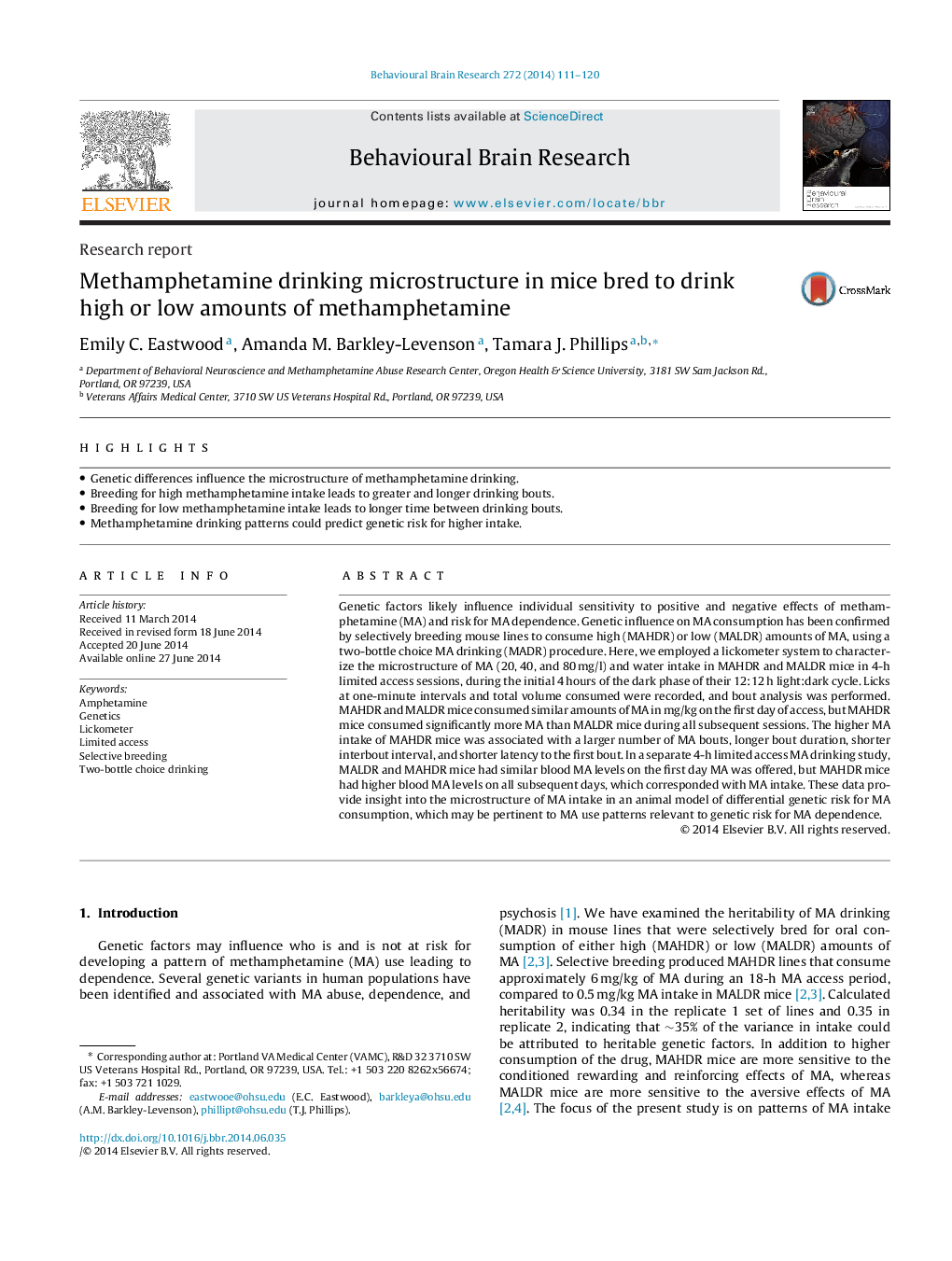| Article ID | Journal | Published Year | Pages | File Type |
|---|---|---|---|---|
| 6257483 | Behavioural Brain Research | 2014 | 10 Pages |
â¢Genetic differences influence the microstructure of methamphetamine drinking.â¢Breeding for high methamphetamine intake leads to greater and longer drinking bouts.â¢Breeding for low methamphetamine intake leads to longer time between drinking bouts.â¢Methamphetamine drinking patterns could predict genetic risk for higher intake.
Genetic factors likely influence individual sensitivity to positive and negative effects of methamphetamine (MA) and risk for MA dependence. Genetic influence on MA consumption has been confirmed by selectively breeding mouse lines to consume high (MAHDR) or low (MALDR) amounts of MA, using a two-bottle choice MA drinking (MADR) procedure. Here, we employed a lickometer system to characterize the microstructure of MA (20, 40, and 80Â mg/l) and water intake in MAHDR and MALDR mice in 4-h limited access sessions, during the initial 4Â hours of the dark phase of their 12:12Â h light:dark cycle. Licks at one-minute intervals and total volume consumed were recorded, and bout analysis was performed. MAHDR and MALDR mice consumed similar amounts of MA in mg/kg on the first day of access, but MAHDR mice consumed significantly more MA than MALDR mice during all subsequent sessions. The higher MA intake of MAHDR mice was associated with a larger number of MA bouts, longer bout duration, shorter interbout interval, and shorter latency to the first bout. In a separate 4-h limited access MA drinking study, MALDR and MAHDR mice had similar blood MA levels on the first day MA was offered, but MAHDR mice had higher blood MA levels on all subsequent days, which corresponded with MA intake. These data provide insight into the microstructure of MA intake in an animal model of differential genetic risk for MA consumption, which may be pertinent to MA use patterns relevant to genetic risk for MA dependence.
